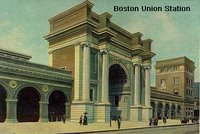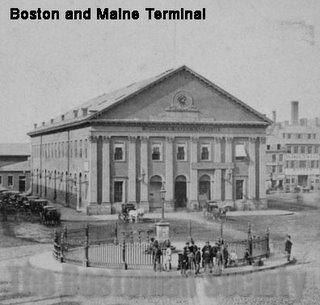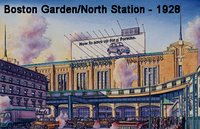The magnitude of its undertaking has been compared to the building of the Panama Canal, the Alaska Pipeline, and the English Channel “Chunnel”. It was designed to replace an aging, deteriorating 6-lane highway, often called Boston’s “Second Green Monster”, that was serving twice its designed capacity and crawled upwards of 10 hours a day. The “Big Dig”, the massive project begun in 1991 to plant Boston’s Central Artery, Interstate 93, underground, was the answer to all of the city’s problems.
The Big Dig project consisted of two stages: 1) to complete an extension of I-90 (the Mass Pike) east under Boston Harbor and onto Logan Airport, and 2) to bury the city’s congested north-south Central Artery, I-93, underground to reunite Downtown Boston with its waterfront and North End (the city’s version of “little Italy”) communities, which had been severed by the giant overhead highway, built in 1959, from the rest of the city. Such a project presented major challenges, including the building of the underground highway while still keeping the existing highway open to traffic, the countless rerouting of exit ramps and detours (often on a monthly, or even weekly, basis), the novel design of a crossing over the Charles River that incorporates a network of complex traffic patterns, and the application of novel construction methods at such a large scale (not to be discussed any further in detail…refer to the MTA’s site here for further information).
The end results (as of Feb 2006):
1) The construction and opening (in 1995) of the I-90 Ted Williams Tunnel under Boston Harbor, connecting South Boston to Logan International Airport
2) The construction of the Leverett Connector Bridge, which parallels the main I-93 Central Artery
3) The building of the Zakim/Bunker Hill Memorial Bridge, the widest cable-stayed bridge (10 lanes) in the world at the time of opening (2003/2005, in stages of 4 lanes, 4 lanes, and 2 cantilevered lanes)
4) The opening of the Central Artery tunnels, 1.5 miles of I-93 in addition to an underground knot of access roads, entrances/exits, and pull-off lanes, in stages in 2003
5) The demolition of the 1959 elevated Central Artery, completed in 2004, linking the North End and Waterfront with downtown Boston
According to the Big Dig official site, 98% of the project is complete, albeit well over budget and over two years past its initially targeted date of completion. Since its opening, the tunnels have been plagued with problems, mainly severe leaking that revealed faulty construction in Boston’s notoriously wet ground (after all, most of the city exists on artificial landfill that was once a vast bay). Motorists traveling through the tunnels in the dead of winter still notice enormous ice sheets and stalactites hanging from the crude tunnel ceiling. Above-ground construction projects have penetrated the tunnels on some occasions, at one time dropping large boulders onto an ambulance transporting a patient to nearby Massachusetts General Hospital. The healing of the new, now obsolete, tunnels continues.
However, the benefits of the project are already being felt. Boston’s atmospheric carbon monoxide levels have begun to drop (12% since before the project began). The giant, conspicuous scar left by the elevated roadway is soon to give way to the Rose Kennedy Greenway, a vast, green park designed to weave through Boston’s growing skyline. This project, as far as I can tell, is slated to continue well into 2007.
I have mixed feelings about the project, but overall, I think it will ease the city’s efforts to facilitate pedestrian and automobile access through and around the city, as well as improve the overall aesthetic of Boston. Although these results have yet to be seen, residents of Boston are assured they are soon to come.
PICTURES:
The I-93 Central Artery weaves through Downtown Boston before its demolition starting in 2003...

The I-90 Ted Williams Tunnel, opened in 1995, completed the Mass Pike Extension into East Boston.

The Zakim/Bunker Hill Bridge carries I-93 over the Charles River. It is one of the widest cable-stayed bridges in the world...

The newly opened Central Artery Tunnels began to spring large leaks within the first year of its opening. These failures uncovered faulty construction and corruption on the part of the MTA and local government officials. Safety concerns over the tunnels prompted Gov. Mitt Romney to publicly declare that he felt the tunnels were not safe for general public use (damage has and continues to be repaired).

I took the next two pictures last Sunday (Feb 5, 2006). The first is looking over a tunnel portal, and the second shows the scar left from the demolition of the elevated Central Artery.


Below: an artist's depiction of the Rose Kennedy Greenway in front of Rowes Wharf, in the same general area as where the above picture was taken.























